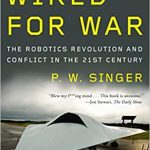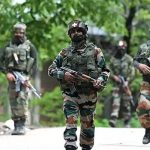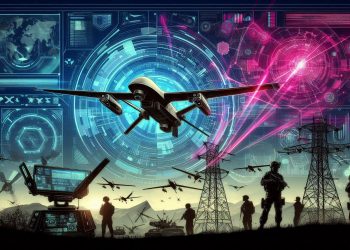
In 2021, the world commemorated the 32nd anniversary of the Tiananmen Square crackdown, images of which remain fresh in everyone’s mind. The ‘incident,’ as the Chinese Communist Party (CCP) refers to it, has continued to be shrouded under a veil of secrecy due to lack of official accounts and death tolls from the CCP and over-exaggeration of facts from the Western media. However, many across the world, including some Chinese citizens, agree that the actions taken by the party to curb dissent and protests were violent lacked sympathy and have become a taint on their history. The incident itself and the events that led up to it in 1989 also act as a lesson in understanding China and its politics, which is often misunderstood by the ones outside the system or unfamiliar with it. The former Indian foreign secretary, Vijay Gokhale, who has also served as an ambassador to China, recounted his memories of the incident in his book ‘Tiananmen Square: The Making of a Protest,’ published by HarperCollins in 2021. The retired diplomat through his book dispels some common misunderstandings regarding the incident and the circumstances that led up to it. He also shares personal anecdotes and analyses of the events while giving readers an inside look at the events that transpired that night. His analysis, and recounting explores the unique and secretive style of functioning of the CCP and its leaders that the world often fails to interpret correctly.
The book serves as a narration of the CCPs inner struggle for power and stability and its effect on the Chinese people that ultimately led to the night of 4th June 1989, from an Indian perspective. The discourse surrounding the incident, however, has been either restrictive under the CCP or inflated by the Western ‘free-world’ for their benefit even after 32 years. Through his book, the author gives a more balanced perspective and details on why China managed to pass over the ‘massacre’ unscathed and where the West went wrong with its misinterpretations of the train of events. He does this by scrutinising the turbulent political scenery in China during the 1980s. The making of the protests, as he calls it, that led up to the Tiananmen Square incident, display the nature of Chinese politics and its policy of ‘party above the nation’ or ‘party above all.’ According to the author, to understand the Chinese tactics in the 21st century, it is essential to understand their methods of functioning, which differs from most states because, while Communist China might have changed some of its ideology, its core system remains the same. Thus, the analysis of the Tiananmen Square incident will help the world understand more about the superpower and its intentions when it does not reveal much about itself, despite being a cause of concern to its counterparts in the East and the West alike.
The first half of the book recounts Deng Xiaoping’s rise to power and his place as the maker of modern China, followed by the beginning of the internal conflict between the old guard and the new guard within the party.
Deng, who was once exiled from the party, did not have it easy rising back into prominence, but with his resilience, and use of dissent through the democracy wall, he once again found himself in the echelons of the CCP. Ironically enough, he was also the one who shut down the democracy wall and was the hardest on dissenters once he became the chairman. As a victim himself, Deng understood the aftermath of Mao’s cultural revolution and the effect it had on China and its economy. This is why after becoming the chairman, he substituted Mao’s policies in favour of a policy of modernisation in the fields of agriculture, industry, science and technology, and defence. The change in policies, especially economic reforms, and change within the party with the rise of younger leaders such as Hu Yaobang, Zhao Ziyang, and Li Peng, was followed by improvement in Chinese daily life and a period of stability. But things started to get murky when some of the younger leaders were seen as more lenient towards intellectuals and dissenter’s and were later removed from the party for their ‘western capitalist’ views. Hu Yaobang, the then successor of Deng, was the first of the lot to be removed for protecting those dissenting against the party and its ruling class. The growing dissent and political discussions in university campuses among academics and students under Hu’s protection were beginning to agitate the party, and led up to them shutting down student body elections in universities in 1986. This was the beginning of the student protests, which were later joined by media professionals, academics and even the common man. The 1986 protests, however, were dealt with and instigated almost no violence on either side. After curbing the protests, the CCP under the new general secretary, Zhao Zhiang, shifted focus on economic reforms. The agenda was to establish a ‘socialist commodity economy’ by opening up the Chinese economy to the world, without any political reform, because according to the CCP, they understood the needs and desires of the people of China without the requirement for a change in the existing political regime.
The second half of the book takes place in 1989 after the death of Hu Yaobang, which led to a new series of protests in the memory of the leader, and unrest within the party. A void rising in the centre of the CCP alongside the rising protests among students, intellectuals and later journalists, and party members created a precarious situation for the state, and soon enough the eyes of the world were on China. The CCP, while mostly non-violent, started becoming more strict with the students and protestors as they were forcefully evicted from protest sites, but some student accounts suggest that there was minor violence on both sides. This along with the inflammatory remarks by the CCP as they called the protestors ‘counter-revolutionary forces,’ led to further disgruntlement among the students that was aggravated by the dismissal of journalist Qin Benli. Students started to boycott classes, and many others joined their struggle. Zhao through his attempts to pacify the situation and his handling of the protests had managed to upset Deng and the ‘elders’ of the party right before a historic event. The historic visit of Mikhail Gorbachev, and the return of normality in Sino-Soviet relations after decades of tension, had been overshadowed by students on a hunger strike.
Despite the successful visit, Deng was unhappy with Zhao’s callousness and his implication of Deng’s role in the handling of the protests in the eyes of the public. As the number of protestors continued to increase in Tiananmen square and around China, Deng had decided to take the narrative back under his control. He first unified the party and then ordered strict action against the protests to bring back stability in the state. After ousting Zhao from the party, Deng and the elders presented a strong united front and declared martial law in Beijing. Protestors were given a final warning before riot police and tanks were deployed. The forces at first, while intimidating, remained largely non-violent and the protestors began to vacate the square and surrounding areas themselves. However, it cannot be denied that shots had been fired, the author himself recounts hearing those shots, which had led to the death of multiple protestors. But the exact numbers remain unknown, while the estimated numbers by Western media and embassies remain doubtful. Despite the varied retellings of the night, it was undoubtedly an upsetting incident that should have been avoided.
The epilogue shares with the readers the aftermath of the incident. The ‘miscreants’ that had not managed to escape had been arrested, the CCP continued to have a stronghold on the state, and the focus was back on economic reform. While there were sanctions from the Western world at first, those were soon lifted in favour of trade with the now open Chinese economy. This was followed by the collapse of the Berlin wall and then the Soviet Union, and the world’s focus was back on Europe. The Soviet Union’s fall only strengthened the CCP’s belief that what they did was right by avoiding division in the party since the sustenance and dominance of the CCP above all was essential for China and its future. With the party gaining strength again and China’s economic rise, soon enough the sleeping dragon became a force to be reckoned with in the international domain after playing by the West’s rules until China could stand for itself.
China’s Communist ideology played a major role in the way it was perceived by the West during the incident, which was heightened by the then-ongoing Cold War. This was also noted by the CCP who already knew that after the Soviet Union, Communist China was a cause of concern. The CCP, therefore, did not hesitate to send a strong message to the United States and other western states to not interfere in Chinese politics. Yet, the Western media and their government’s inclination towards democracy and their open disdain towards communist states led to misinterpretation of the events and reporting of rumours instead of facts. According to the author, this also led to misinterpretation of the protestors’ demands and often spread of rumours into diplomatic circles. The protestors’ demand for democracy was not the democracy that is followed in liberal democratic states. The protestors did not desire to topple the communist system, rather their demands for democracy were based on economic requirements, certain personal and press freedom, and fair opportunities. This lack of correct interpretation of the Chinese public – who are known for being highly nationalist, and the misunderstanding of the CCP – who many believed would fall, was a failure of the Western media and diplomatic circles.
The critical view of the Western world’s interpretation of the events and a close look at the Chinese style of politics and diplomacy that is discussed in the book, along with certain personal anecdotes, helps the reader understand the Tiananmen Square incident from an Indian perspective while also recognising the journey of China’s rise as a superpower. The story of Tiananmen Square and its protests, and how the CCP came out of it stronger than before sends a daunting message about the functioning of the CPP. According to the author, understanding the core ideas and secretive functioning of the CCP is essential to understand China and its actions today as well because China might have progressed from its previous style of politics, it continues to follow many of the same precedents it set in the past and preserve the status quo. The comparison of its past and present also gives the world a benefit of knowing what to expect from the state that houses its legitimacy through its economic numbers and nationalist sentiments but leaves a dangerous precedent against dissent, an essential part of the growth of a state.













